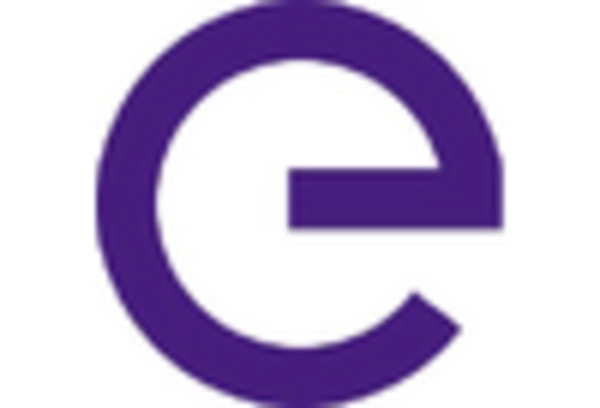Growing Demand for Energy Efficiency
The increasing emphasis on energy efficiency in Europe is a pivotal driver for the distributed energy-resource-management market. As consumers and businesses seek to reduce energy costs and minimize environmental impact, the demand for efficient energy solutions rises. According to recent data, energy efficiency measures could potentially reduce energy consumption by up to 30% by 2030. This trend is further supported by the European Union's commitment to achieving a 55% reduction in greenhouse gas emissions by 2030. Consequently, the The market is likely to experience growth. as it provides innovative solutions that enhance energy efficiency, thereby aligning with both consumer preferences and regulatory goals.
Integration of Smart Grid Technologies
The integration of smart grid technologies is transforming the landscape of the distributed energy-resource-management market. Smart grids facilitate real-time monitoring and management of energy resources, enabling better integration of renewable energy sources. In Europe, investments in smart grid infrastructure are projected to reach €100 billion by 2030, driven by the need for enhanced grid reliability and efficiency. This technological advancement allows for improved demand response capabilities and energy distribution, which are essential for managing distributed energy resources effectively. As smart grid technologies continue to evolve, they are expected to play a crucial role in optimizing energy management and supporting the growth of the distributed energy-resource-management market.
Rising Consumer Awareness and Engagement
Consumer awareness regarding energy consumption and sustainability is on the rise in Europe, significantly impacting the distributed energy-resource-management market. As individuals become more informed about their energy choices, there is a growing inclination towards adopting decentralized energy solutions. Surveys indicate that approximately 70% of European consumers are willing to invest in renewable energy technologies, such as solar panels and energy storage systems. This shift in consumer behavior is likely to drive demand for distributed energy-resource-management solutions that empower users to take control of their energy usage. Consequently, the market is expected to expand as companies respond to this heightened consumer engagement with innovative products and services.
Supportive Government Initiatives and Funding
Government initiatives and funding programs are crucial drivers for the distributed energy-resource-management market in Europe. Various national and regional policies aim to promote renewable energy adoption and enhance energy management systems. For instance, the European Commission has allocated over €1 billion for research and innovation in energy technologies, which includes support for distributed energy resources. These initiatives not only provide financial backing but also create a favorable regulatory environment that encourages investment in energy management solutions. As governments continue to prioritize sustainability and energy independence, the distributed energy-resource-management market is likely to benefit from increased funding and supportive policies.
Technological Innovations in Energy Management
Technological innovations are reshaping the distributed energy-resource-management market, driving efficiency and effectiveness in energy management. Advancements in artificial intelligence, machine learning, and data analytics are enabling more sophisticated energy management systems. These technologies allow for predictive analytics and real-time decision-making, which can optimize energy usage and reduce costs. In Europe, the market for energy management systems is expected to grow at a CAGR of 15% through 2027, reflecting the increasing adoption of these technologies. As organizations seek to enhance their energy management capabilities, the distributed energy-resource-management market is poised for substantial growth, fueled by ongoing technological advancements.


















Leave a Comment